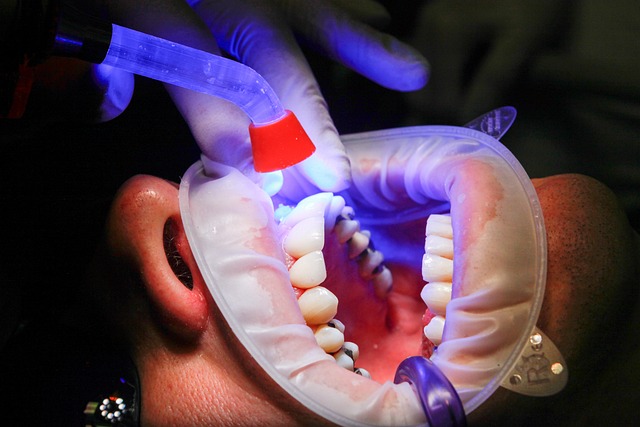Post-traumatic stress disorder (PTSD) is a mental health condition triggered by traumatic events, causing flashbacks, nightmares, and avoidance behaviors. Modern PTSD treatment focuses on exposure therapy, which safely confronts traumatic memories to help individuals process trauma responses. By gradually facing fears, patients regain control, develop healthier coping mechanisms, and manage symptoms. Key techniques include prolonged exposure, cognitive processing therapy, and eye movement desensitization and reprocessing. Customized treatment plans, supported by therapists in a safe environment, lead to reduced emotional distress and improved quality of life for individuals with PTSD.
“Uncovering New Paths to Healing: Exposure Therapy for Trauma offers a comprehensive guide to understanding and treating Post-Traumatic Stress Disorder (PTSD). This article delves into the profound impact of trauma on individuals, exploring traditional treatment methods and introducing exposure therapy as a game-changer. We’ll dissect the science behind this approach, providing a step-by-step insight into its implementation. From preparation tips to diverse techniques and real-life success stories, discover how exposure therapy empowers individuals to conquer PTSD, embracing a brighter future.”
Understanding PTSD and Its Impact on Individuals

Post-traumatic stress disorder (PTSD) is a mental health condition that can develop after exposure to traumatic events, such as violence, accidents, or natural disasters. It’s a complex response that affects individuals both physically and emotionally. The impact of PTSD can be profound, leading to symptoms like flashbacks, nightmares, severe anxiety, and avoidance behaviors. These symptoms often intrude on daily life, causing distress and disrupting normal functioning.
Understanding PTSD is crucial for effective treatment, including exposure therapy, which has emerged as a powerful approach in the PTSD treatment arsenal. This therapy involves gradually confronting traumatic memories or situations in a safe environment to help individuals process and overcome their trauma responses. By facing their fears, individuals with PTSD can learn to manage symptoms, regain control over their lives, and develop healthier coping mechanisms.
Traditional Approaches to Trauma Treatment

In the past, traditional approaches to trauma treatment often focused on avoiding or suppressing distressing memories and emotions associated with the traumatic event. This was typically done through techniques like cognitive behavioral therapy (CBT) that aimed to alter negative thought patterns and behaviors related to the trauma. However, these methods could inadvertently reinforce avoidance behaviors, making it harder for individuals to process and overcome their trauma in a safe and controlled manner.
Modern treatments, such as exposure therapy, have emerged as more effective approaches for PTSD treatment. By gradually and intentionally exposing individuals to memories or situations that trigger anxiety, this method helps patients face their fears in a supportive environment. This process facilitates the recalibration of emotional responses, ultimately leading to reduced symptoms of avoidance and increased resilience in coping with traumatic memories.
Introduction to Exposure Therapy

Exposure therapy is a powerful and effective form of PTSD treatment that helps individuals confront and overcome traumatic memories or experiences. It’s a structured and guided process where patients are slowly and safely exposed to the fear-inducing stimuli, allowing them to learn that they can manage their anxiety responses. This approach is based on the idea that by repeatedly exposing oneself to the traumatic memory in a controlled setting, the individual can reduce the intensity of their emotional response over time.
During exposure therapy sessions, patients may relive the trauma through imagined scenarios, recall memories, or even visit places associated with the event. A trained therapist will support them throughout this process, helping them stay in the present moment and manage their emotions. As the patient becomes more comfortable facing these fears, they develop coping strategies to control anxiety and gradually regain a sense of control over their lives, offering hope for healing from PTSD symptoms.
Mechanisms of Exposure Therapy in PTSD Treatment

Exposure therapy is a core component of Post-Traumatic Stress Disorder (PTSD) treatment, aiming to help individuals confront and process traumatic memories in a safe environment. This therapeutic approach is based on the principle that repeated and controlled exposure to the trauma memory can reduce its intense emotional response over time. By facing their fears, patients learn to manage their anxiety and no longer avoid situations or reminders associated with the trauma.
The mechanism behind exposure therapy involves desensitization and reprocessing. Initially, traumatic memories are often stored in a distorted form, leading to intense fear and avoidance. Through gradual and repeated exposure, the brain reprocesses these memories, reducing their emotional impact. This process allows individuals to gain a new perspective on the event, integrating it into their overall life story without the overwhelming anxiety previously associated with it. As a result, patients can regain control over their lives and experience improved mental well-being in PTSD treatment.
Preparing for Exposure Therapy Sessions

Preparing for exposure therapy sessions is a crucial step in the process of overcoming trauma and managing PTSD symptoms. Before beginning, individuals should ensure they feel ready and motivated to confront their fears. This often involves open communication with the therapist about expectations, concerns, and personal boundaries. Creating a safe and supportive environment at home can also aid in the preparation, by setting aside dedicated space for relaxation and self-care techniques that promote calmness and resilience.
Understanding the purpose of exposure therapy is essential. Through gradual and controlled exposure to traumatic memories or situations, individuals learn to manage their reactions and realize that their feared outcomes are unlikely to occur. This process empowers them to regain control and reduce the power that traumatic memories hold over their lives. Therapists will guide through this journey, offering tools and strategies tailored to each person’s unique needs and pace.
Conducting Exposure Therapy: Step-by-Step Guide

Exposure therapy is a structured and guided process aimed at helping individuals confront and overcome traumatic memories or experiences, offering an effective approach to PTSD treatment. Here’s a step-by-step guide to conducting exposure therapy sessions:
1. Assessments and Setting Goals: Begin by evaluating the client’s history, symptoms, and level of distress associated with specific traumas. Collaboratively set realistic therapeutic goals tailored to their unique needs. This step ensures the intervention is personalized and prepares both therapist and client for the upcoming process.
2. Create a Hierarchical List of Traumatic Memories: Work with the individual to rank traumatic memories or situations from least to most distressing. Start with less anxiety-provoking scenarios and gradually progress towards more challenging, high-arousal experiences. This hierarchical list serves as a roadmap, allowing for controlled exposure and stepwise desensitization.
3. Educate and Prepare: Educate clients about the nature of trauma, fear responses, and how memories can be processed differently in the presence of anxiety or avoidance. Ensure they understand that exposure therapy is a safe, controlled environment where they can learn to manage their reactions. Address any concerns or misconceptions to foster trust and motivation.
4. Exposure Techniques: Employ various techniques like imaginal exposure (recalling traumatic memories in detail), virtual reality exposure, or real-world exposure (face-to-face interactions in situations mimicking the trauma). During exposure, encourage clients to stay in the distressing situation until the anxiety decreases naturally, teaching them coping strategies along the way.
5. Cognitive Restructuring: Integrate cognitive-behavioral techniques to challenge and reframe unhelpful beliefs related to the trauma. Help clients develop more adaptive interpretations of their experiences, reducing the negative impact of traumatic memories.
Different Types of Exposure Therapy Techniques

Exposure therapy is a core component of PTSD treatment, aiming to help individuals confront and overcome traumatic memories or situations safely. Several techniques fall under this umbrella:
1. Prolonged Exposure (PE): This involves repeated exposure to traumatic reminders over an extended period. It includes both imagined scenarios and real-world exposures, helping individuals reduce the intensity of their emotional responses over time.
2. Cognitive Processing Therapy (CPT): CPT focuses on identifying and challenging unhelpful thoughts and beliefs associated with the trauma. By modifying these cognitive distortions, individuals can develop healthier perspectives and reduce the impact of traumatic memories.
3. Eye Movement Desensitization and Reprocessing (EMDR): This unique technique combines exposure to traumatic memories with bilateral stimulation, such as side-to-side eye movements or tones. Research suggests this helps process and integrate traumatic memories, reducing their emotional charge.
Potential Benefits and Challenges of Exposure Therapy

Exposure therapy for trauma has emerged as a powerful tool in the arsenal of PTSD treatment. One of its key benefits is the ability to desensitize individuals to traumatic memories, reducing the intensity of emotional responses and associated symptoms. By gradually confronting feared stimuli, patients can learn to manage their reactions, regain a sense of control, and ultimately decrease the impact of trauma on their daily lives. This therapy offers a promising approach, especially for those struggling with complex PTSD, as it empowers individuals to confront and process distressing memories in a safe and controlled environment.
However, exposure therapy is not without challenges. It can be emotionally taxing, triggering intense feelings and potentially leading to temporary relivings of trauma. Some patients may find it difficult to tolerate the distress associated with revisiting traumatic experiences. Additionally, individual responses vary; what works for one person might not be as effective for another. Therapists must carefully tailor the therapy to each patient’s needs, ensuring a supportive and secure environment. Despite these challenges, exposure therapy remains a valuable technique in the treatment of PTSD, offering long-term benefits that can significantly improve patients’ quality of life.
Real-Life Success Stories: Exposure Therapy in Action

Exposure therapy has proven to be a powerful tool for individuals suffering from Post-Traumatic Stress Disorder (PTSD). Real-life success stories abound, offering hope and inspiration. Many patients have found relief and a renewed sense of control after undergoing this therapeutic approach.
One such example involves a veteran who had been struggling with flashbacks and nightmares related to his combat experiences. Through exposure therapy, he gradually confronted and processed these traumatic memories in a safe, controlled environment. Over time, the intensity of his nightmares diminished, and he felt more equipped to manage his symptoms. This transformation allowed him to reintegrate into civilian life, resume his hobbies, and rebuild connections with loved ones, demonstrating the profound impact of this PTSD treatment method.
